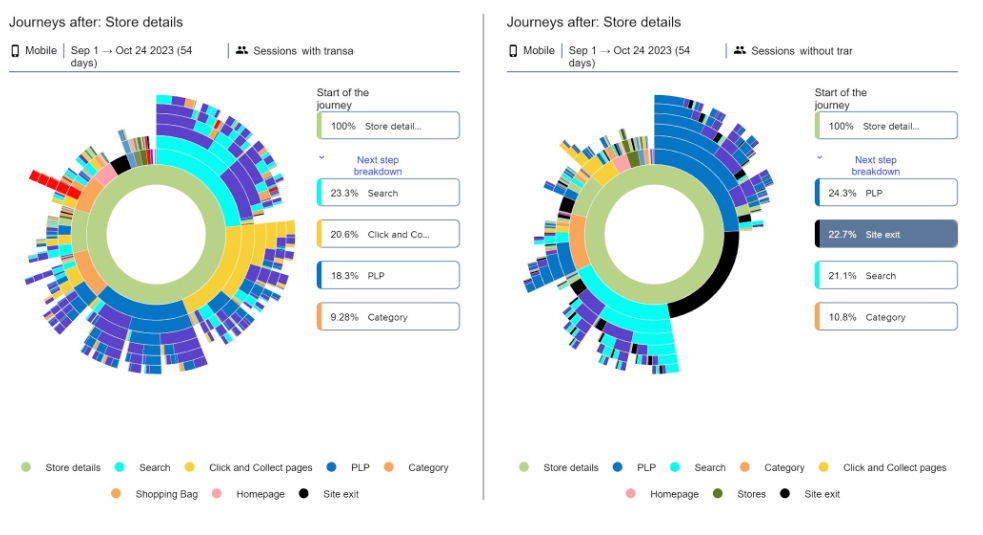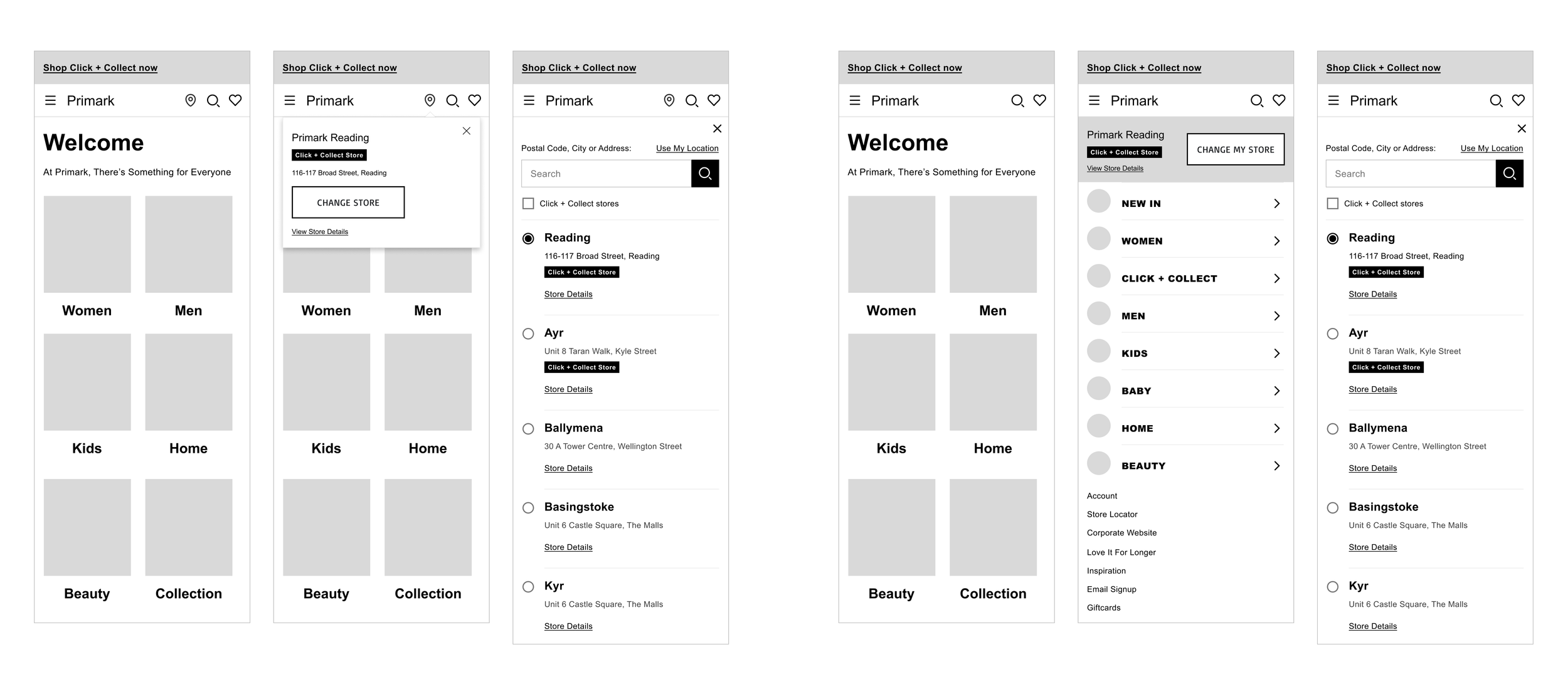Primark Geolocation
Store selection simplification
Overview
I designed a net new geolocation feature to simplify the store selection process for Primark online.
The feature was designed to support the Click + Collect rollout and reduce friction by enabling store selection earlier in the journey.
My Contributions
Conducted upfront discovery research using web analytics
Collaborated with Product Owner (PO) and Business Analyst (BA) to prioritize usability pain points
Created wireframes and high-fidelity designs
Defined user flows and interaction triggers
Collaborated on qualitative and quantitative user research with Userlytics partner
Company Primark (United Kingdom)
Role Lead UX Designer
Duration 7 months (2023-2024)
Skills & Tools
Figma
JIRA
Content Square
Userlytics
Design Systems
Amplience
Project Background
BuSiness Problem
Primark’s website lacks e-commerce, pushing demand for “Click + Collect,” but users face friction with late-stage, disruptive store selection and difficulty checking stock or setting a preferred store, leading to interruptions in product discovery and drop-offs.
CONSTRAINTS
Website tech limitations
Discovery & Approach
Current eXperience
*Current mobile web screenshots
cUrrent Pain points
Users can't check product availability until a store is selected—this adds unnecessary steps and friction.
The store locator presents a full A–Z list, which is overwhelming and irrelevant for users who just want to find their nearest option quickly.
Upfront discovery
Benchmarking & competitor anlaysis
Content Square journey analysis
Design
Wireframes
Design Opportunities
Introduce store selection earlier
Provide persistent store visibility to give users clarity and control throughout the journey
Usability Testing
Objective
To evaluate how users interact with store selection features, including geolocation, store pop-ups, and fallback flows.
Methodology
Participants: 100 UK users, ages 21–45
Tool: Mobile survey via Userlytics
Format: 22 quantitative tasks
Key Questions
Would you allow location access?
Where do you expect to choose a store?
Findings / Insights
The experience of allowing and not allowing geolocation was positively perceived by users
Most users would share their location because it’s easy and quick way to find the nearest store
Most users were happy with the placement
Final Design
Reflection
This geolocation feature was developed to high-fidelity prototypes and validated through user testing. Although it was ultimately not prioritized for rollout, the process generated valuable insights into user behavior around store location and inspired new internal discussion around personalization features.
What I Learned
Small UX improvements, such as replacing a disruptive pop-up with an inline experience, can drive significant impact on both user satisfaction and business outcomes.





